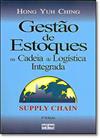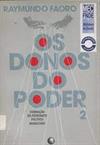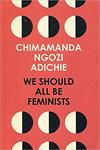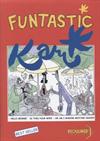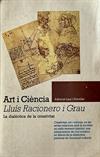
The Future Eaters: Ecological History of the Australasian Lands and People
Registered by charbono of Creswick, Victoria Australia on 4/28/2006
 This book is in a Controlled Release!
This book is in a Controlled Release!
 This book is in a Controlled Release!
This book is in a Controlled Release!
3 journalers for this copy...
This is such an excellent book that I bought this copy off ebay just for bookcrossing.
The book is divided into 3 parts - the first part is about the long-time ecological & geological history of Gondwanaland, (160 million years ago up to the last 100,000 years), the second part is about the spread of humans throughout the world and the mass extinctions which have followed whenever our species reaches a new land. The third part deals with our recent history (last 250 years) and how the Australian Aboriginies managed the land vs. what happened (and is still happening) when the Europeans invaded.
Why didn't I learn this stuff in school? When seen from the perspective of tens of thousands of years and not just the last few thousand, suddenly the Big Picture of human history comes into plain focus.
So what is a Future Eater? Basically a species which uses more resources than the land can sustain. Future Eating follows a pattern: for example: humans discover a 'new' island on which no human has ever set foot. The land abounds with animals which show no fear of humans. Over time (could be weeks or decades) the humans decimate large numbers of animals while meanwhile the human population increases. It gets to the point where the food-animals become extinct, and the humans are left on the island with nothing to eat and no-one to blame but themselves. So the next stage is to set off in search of 'new' islands, and the cycle repeats. This 'boom & bust' cycle affects not just food-animals but entire ecosystems. Once a species is made extinct it's too late, and once an island has lost its trees and its topsoil it might be thousands of years before it becomes fertile again. As recently as 10,000 years ago the Sahara desert was forest, ditto for 90% of Europe. Meanwhile in Australia only 8% remains of the forests that were here when white men came.
However not all humans are Future Eaters. To quote from the book: "Most hunter-gatherer societies are ecologically sustainable, the basic lifestyle having been in existence for 100,000 years or more. Virtually all hunter-gatherer societies seem to possess a 'golden rule' of population. This is, that in 'normal' times, the human population of a given area rarely exceeds 20-30 per cent of the carrying capacity of the land." The author (actually, the evidence) suggests that Australia has a carrying capacity of 6-12 million people.
This has of course been increased (our population is currently at 21 million) due to totalitarian agriculture. So the story repeats before our eyes: to feed our growing population, more land is converted to food production, which in turn feeds overpopulation.
This is a very interesting and important book. More people should be aware of this stuff - it is the history of our species and our continent and it's vitally important that we learn from our mistakes. If you enjoyed this book I really recommend "Going Native: Living in the Australian Environment", a philosophy book called "Ishmael" by Daniel Quinn, and also anything by Derrick Jensen.
About the Author
The book is divided into 3 parts - the first part is about the long-time ecological & geological history of Gondwanaland, (160 million years ago up to the last 100,000 years), the second part is about the spread of humans throughout the world and the mass extinctions which have followed whenever our species reaches a new land. The third part deals with our recent history (last 250 years) and how the Australian Aboriginies managed the land vs. what happened (and is still happening) when the Europeans invaded.
Why didn't I learn this stuff in school? When seen from the perspective of tens of thousands of years and not just the last few thousand, suddenly the Big Picture of human history comes into plain focus.
So what is a Future Eater? Basically a species which uses more resources than the land can sustain. Future Eating follows a pattern: for example: humans discover a 'new' island on which no human has ever set foot. The land abounds with animals which show no fear of humans. Over time (could be weeks or decades) the humans decimate large numbers of animals while meanwhile the human population increases. It gets to the point where the food-animals become extinct, and the humans are left on the island with nothing to eat and no-one to blame but themselves. So the next stage is to set off in search of 'new' islands, and the cycle repeats. This 'boom & bust' cycle affects not just food-animals but entire ecosystems. Once a species is made extinct it's too late, and once an island has lost its trees and its topsoil it might be thousands of years before it becomes fertile again. As recently as 10,000 years ago the Sahara desert was forest, ditto for 90% of Europe. Meanwhile in Australia only 8% remains of the forests that were here when white men came.
However not all humans are Future Eaters. To quote from the book: "Most hunter-gatherer societies are ecologically sustainable, the basic lifestyle having been in existence for 100,000 years or more. Virtually all hunter-gatherer societies seem to possess a 'golden rule' of population. This is, that in 'normal' times, the human population of a given area rarely exceeds 20-30 per cent of the carrying capacity of the land." The author (actually, the evidence) suggests that Australia has a carrying capacity of 6-12 million people.
This has of course been increased (our population is currently at 21 million) due to totalitarian agriculture. So the story repeats before our eyes: to feed our growing population, more land is converted to food production, which in turn feeds overpopulation.
This is a very interesting and important book. More people should be aware of this stuff - it is the history of our species and our continent and it's vitally important that we learn from our mistakes. If you enjoyed this book I really recommend "Going Native: Living in the Australian Environment", a philosophy book called "Ishmael" by Daniel Quinn, and also anything by Derrick Jensen.
About the Author
Journal Entry 2 by charbono at Renmark-Paringa Community Centre (Chaffey House) in Renmark, South Australia Australia on Thursday, September 21, 2006
Released 17 yrs ago (9/22/2006 UTC) at Renmark-Paringa Community Centre (Chaffey House) in Renmark, South Australia Australia
WILD RELEASE NOTES:
RELEASE NOTES:
on the Free Book shelf opposite reception.
on the Free Book shelf opposite reception.
This rates as one of the most significant and impacting books I've read this year. It fits alongside "Affluenza" and Peter Singer's "The Ethics of What We Eat" in my brain. Flannery presents a powerful and compelling socio/enviro/scientific analysis of the history of Australia and the surrounding lands, and points a warning finger at our future... & does it in a very readable and accessible way.
It's pretty mind-boggling to consider what our landscape would look like without the impact of humans to the extent that we've trashed the place. Imagine what our region would look like with diprotodons wandering about Australia and with the vast clouds of birds that once inhabited New Zealand... before humans hunted them all to extinction.
The environmental impact of people over time is something I've been considering this year in my efforts to be a good steward of what God has given to us. It's part of the reason I've made the jump to vegetarianism. Flannery's book has reinforced my view, and challenged me considerably. I agree with Charbono's question, "Why didn't I learn this stuff at school?" An abridged version of Flannery's book should be on the high school reading list.
I'll pass this book on to brdgrl, who I know will really enjoy reading it.
Thanks for kicking it off, Charbono!
It's pretty mind-boggling to consider what our landscape would look like without the impact of humans to the extent that we've trashed the place. Imagine what our region would look like with diprotodons wandering about Australia and with the vast clouds of birds that once inhabited New Zealand... before humans hunted them all to extinction.
The environmental impact of people over time is something I've been considering this year in my efforts to be a good steward of what God has given to us. It's part of the reason I've made the jump to vegetarianism. Flannery's book has reinforced my view, and challenged me considerably. I agree with Charbono's question, "Why didn't I learn this stuff at school?" An abridged version of Flannery's book should be on the high school reading list.
I'll pass this book on to brdgrl, who I know will really enjoy reading it.
Thanks for kicking it off, Charbono!
Received from CobdoglaCouple, with thanks. I look forward to reading this.
Released 11 yrs ago (11/19/2012 UTC) at Adelaide, South Australia Australia
CONTROLLED RELEASE NOTES:
In a box of books to be handed over to a more active BX-er.




